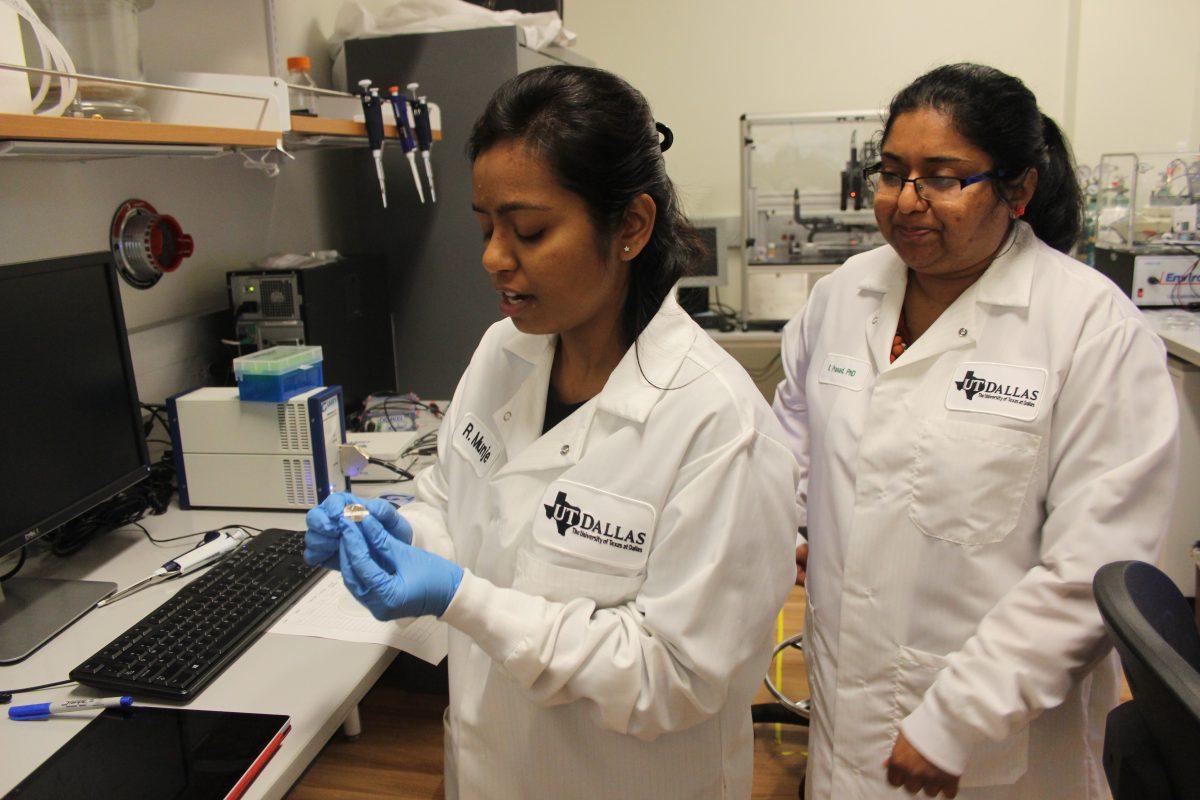A student created a non-invasive sensor to measure blood glucose levels through sweat, making diabetic testing more accessible.
Rujuta Munje, a biomedical engineering graduate student, said she created the device to help enhance patient care. She partnered with the Associate Department Head of Biomedical Engineering Shalini Prasad who gave her the initial idea.
“It is a challenging and at the same time very interesting project that represents cutting edge research opportunity,” Munje said. “When Dr. Prasad discussed the approach for implementation of this project, I knew I was going to learn a lot technically from it. I think that is what kept me going.”
Munje’s sensor is a simple, small fabric strip that can be worn like any other accessory.
Prasad said while doctors argue finger pricking is the simplest method, this new practice to testing blood glucose levels could make it even easier.
“If you are a pre-diabetic, Type 2 diabetic, or a pediatric, then the only way to do it is finger pricking or getting a little bit of blood,” Prasad said. “They say it is very minimally invasive but it hurts if you have to do it every time and multiple times of the day.”
Living with Type 1 diabetes for 19 years, computer science freshman Will Wylie said fluctuation in blood sugar, whether high or low, has negative effects on his body.
“When my blood sugar goes low (below 70) I get very weak and my ability to think critically goes down,” he said. “If it’s too high (above 200), it is the opposite. At that range I completely lose my appetite and I have to give myself some insulin. I become incredibly nauseated, it is harder to come down and takes a while.”
Though not yet on the market, Wylie said the capability of the sensor to detect and monitor glucose spikes or fluctuations could prove helpful in managing them before they occur.
“I’ve had to miss class once or twice due to incredibly high blood sugar,” he said. “It would be nice to have an alert pop up on my phone if my blood sugar would be high or low. Sometimes I am not super accurate about estimating my blood sugar.”
While it is still a work-in-progress, Prasad and Munje said the measurement could someday be accessible through a smartphone, making the results easily available.
“The idea is that today your smartphone can measure your heart rate, electrocardiogram, but they aren’t really diagnostic,” Prasad said. “This one can be, and if you get a measurement you can go and validate it.”
Sociology senior Femi Babafemi has been diabetic for 13 years, and said having that technology would make managing his diabetes easier. Babafemi is blind, and the accessibility of using a smartphone’s features to provide the readings verbally would aid people with similar needs.
“I have to use certain testing devices because I am totally blind, if it can’t talk to me I can’t use it,” Babafemi said. “Being able to connect it to a smartphone will make it possible for people who are visually impaired to use it as well.”
Now that her research has been published, Munje plans to test the sensor on different cohorts of people, such as college students. Prasad said the device was a long-term vision aimed at all age groups, but can fit well with the college community.
“We all know college students don’t eat regularly, they eat at all random times depending on when their schedule lets them,” Prasad said. “This is when you want to measure glucose spikes, because if you are pre-diabetic, that is when it will show and it is a good warning sign. You are not going to be able to convince a college student to take time off of their already busy schedule to go and give a blood test, but if it is something you can buy at a pharmacy store, then you could slap it on and get a measurement.”
While the device is close to completion, Prasad said this is only step two, and after testing on a larger demographic of people, they will take steps toward selling the device on the market.
“If we are successful in our phase two effort, then we are very close to (making the product) where we interact with commercial entities,” Prasad said. “That’s when we will be closer to selling it in CVS or Walgreens or even on Amazon.”











